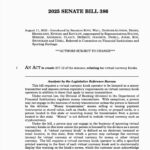Stablecoin Transfer Volume Q3 2025 Surges to $15.6 Trillion
Stablecoin transfer volume reached an unprecedented $15.6 trillion in the third quarter of 2025, according to research released by cryptocurrency exchange CEX.io. Market research analyst Illya Otychenko described this period as the “most active” for stablecoins to date, with automated trading bots driving the majority of transactional activity.
Automated Bots Dominate Stablecoin Transfers
Otychenko told Cointelegraph that CEX.io’s analysis, based on data from Visa/Allium and Artemis, indicates that approximately 71% of the Q3 2025 stablecoin transfer volume involved bot-driven transactions. Both high-frequency trading bots and those potentially engaging in manipulative behavior such as wash trading are included in this figure. According to Otychenko, “unlabeled high-frequency bots that perform over 1,000 monthly transactions and $10 million in monthly volume dominated the said 71% figure” (via Cointelegraph).
Organic, non-bot stablecoin activity made up about 20% of the total, while the remaining 9% resulted from internal smart contract movements and intra-exchange transfers.
Otychenko noted, “It will be critical for policymakers to distinguish between these types of activity when evaluating systemic risk and real-world adoption.” The data suggests that while bots are providing market liquidity, a significant portion of the transfer volume may not reflect actual economic transactions.
Retail Stablecoin Transactions Reach New Highs
Despite the surge in bot-driven volume, retail-sized stablecoin transfers (under $250) also climbed rapidly. The CEX.io report found that retail activity set a new all-time high in September and throughout Q3, making 2025 the “most active year ever for retail stablecoin usage.” Retail-sized stablecoin transactions are forecast to exceed $60 billion by the year’s end.
CEX.io data shows nearly 88% of sub-$250 stablecoin transactions are related to exchange trading. However, a growing portion of retail activity now supports remittances, payments, and fiat conversions, highlighting stablecoins’ expanding utility for everyday financial needs. Non-trading stablecoin activity increased by over 15% in 2025, further demonstrating their evolving role in global finance.
The exchange summarized, “Both categories point to stablecoins’ growing role in facilitating payments, remittances, and cashing out earnings.”
Market Leaders and Net Inflow Trends
In addition to transaction value, net inflows—the difference between newly minted and redeemed stablecoins—also spiked in the third quarter. Data from RWA.xyz shows stablecoins saw over $46 billion in net inflows in Q3 2025.
Tether’s USDT topped the leaderboard with nearly $20 billion in net inflows, followed by Circle’s USDC with $12.3 billion. The synthetic stablecoin Ethena USDe (USDe) accounted for $9 billion in net inflows during the quarter. These inflows underline increasing investor interest and expanding use across trading and payment applications.
What’s Next for Stablecoin Adoption?
With record transaction volumes and growing non-trading adoption, stablecoins are establishing a greater role in digital and real-world payments. However, the high proportion of bot-driven transfers raises questions about how much of the market represents genuine economic activity. As regulatory attention increases, distinguishing between trading automation and authentic user adoption will become crucial.
For more coverage on digital assets and emerging trends, visit Vizi’s Cryptocurrency section.



















